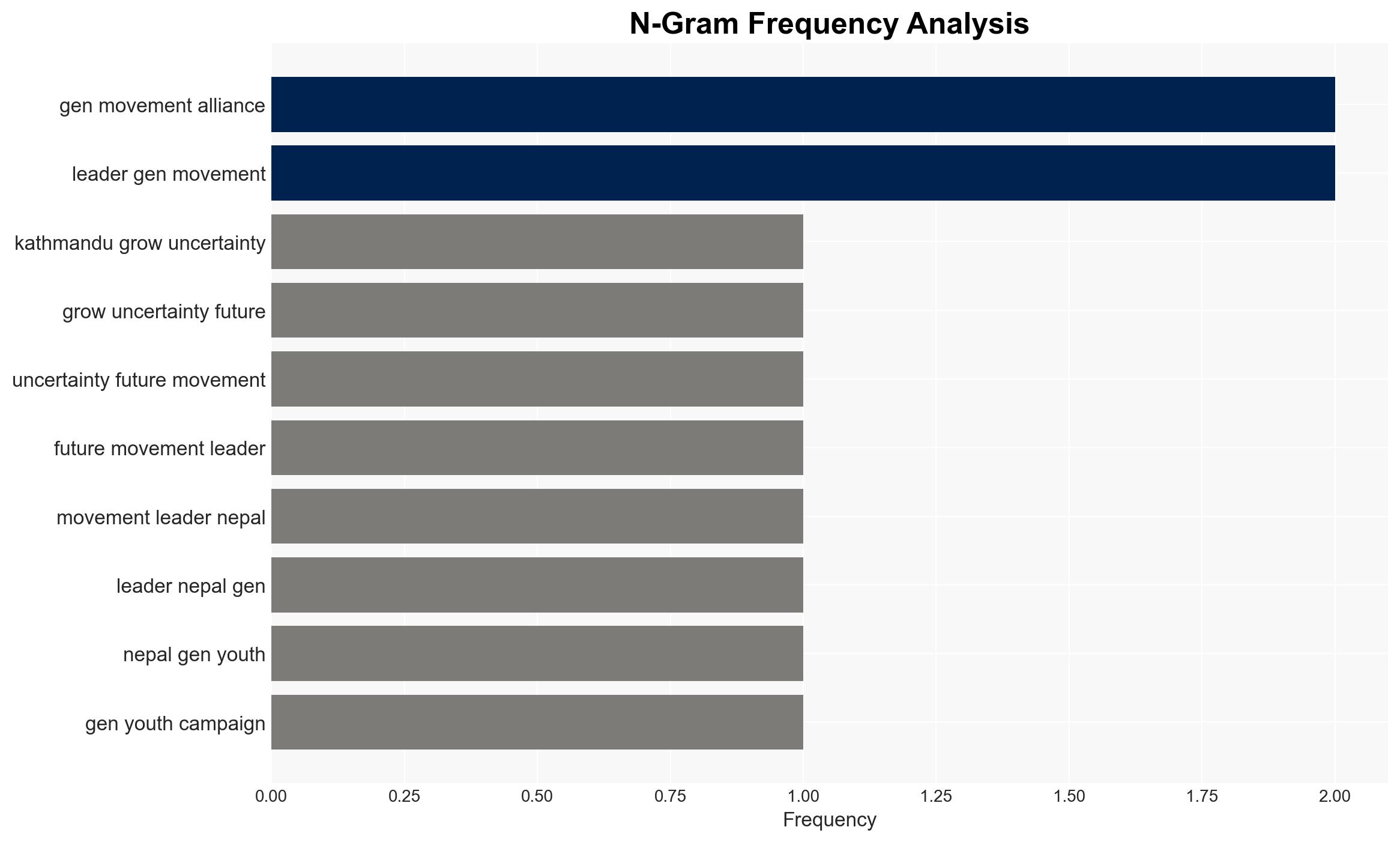Gen-Zs push to form a new political party gains momentum – Khabarhub.com
Published on: 2025-11-13
AI-powered OSINT brief from verified open sources. Automated NLP signal extraction with human verification. See our Methodology and Why WorldWideWatchers.
Intelligence Report: Gen-Zs push to form a new political party gains momentum – Khabarhub.com
1. BLUF (Bottom Line Up Front)
The Gen-Z movement in Nepal is at a critical juncture, with increasing momentum towards forming a new political party. The most supported hypothesis is that the movement will proceed with establishing an independent party, leveraging its grassroots support and youthful energy. Confidence Level: Moderate. Recommended action includes monitoring the movement’s organizational developments and potential alliances with existing political entities.
2. Competing Hypotheses
Hypothesis 1: The Gen-Z movement will successfully form an independent political party, maintaining its autonomy and appealing to a youthful demographic disillusioned with traditional parties.
Hypothesis 2: The Gen-Z movement will ultimately align with existing political entities, either through strategic alliances or absorption, diluting its original objectives but gaining broader political influence.
Hypothesis 1 is more likely due to the strong sentiment among movement leaders for independence and the emphasis on creating a distinct political identity. However, the potential for strategic alliances cannot be dismissed, given the complex political landscape and resource constraints.
3. Key Assumptions and Red Flags
Assumptions: The movement’s leaders can maintain cohesion and effectively mobilize grassroots support. Existing political parties will not co-opt the movement’s key figures.
Red Flags: Potential infiltration by established political interests aiming to undermine the movement’s independence. Lack of experienced political strategists within the movement could hinder effective organization.
4. Implications and Strategic Risks
The formation of a new political party by the Gen-Z movement could disrupt the current political equilibrium in Nepal, potentially leading to increased political fragmentation. This could result in heightened political instability, affecting governance and policy continuity. Additionally, the movement’s success or failure could influence youth political engagement across the region.
5. Recommendations and Outlook
- Monitor the movement’s organizational developments and potential alliances with existing political entities.
- Engage with key movement leaders to understand their strategic objectives and offer guidance on political structuring.
- Best Scenario: The movement successfully establishes a new party, invigorating the political landscape with fresh ideas and youth engagement.
- Worst Scenario: Internal divisions and external pressures lead to the movement’s fragmentation, weakening its political impact.
- Most-likely Scenario: The movement forms an independent party but faces significant challenges in gaining widespread electoral success.
6. Key Individuals and Entities
Raksha Bam, Yujan Rajbhandari, Yatish Ojha, Manish Khanal, Aditya Karna, Ritu Khadka, Amit Khanal, Uparjung Rai, Miraj Dhungana, Durga Prasai, Sudan Gurung.
7. Thematic Tags
Regional Focus: Nepal, Youth Political Movements, Political Party Formation
Structured Analytic Techniques Applied
- Causal Layered Analysis (CLA): Analyze events across surface happenings, systems, worldviews, and myths.
- Cross-Impact Simulation: Model ripple effects across neighboring states, conflicts, or economic dependencies.
- Scenario Generation: Explore divergent futures under varying assumptions to identify plausible paths.
- Narrative Pattern Analysis: Deconstruct and track propaganda or influence narratives.
Explore more:
Regional Focus Briefs ·
Daily Summary ·
Methodology





